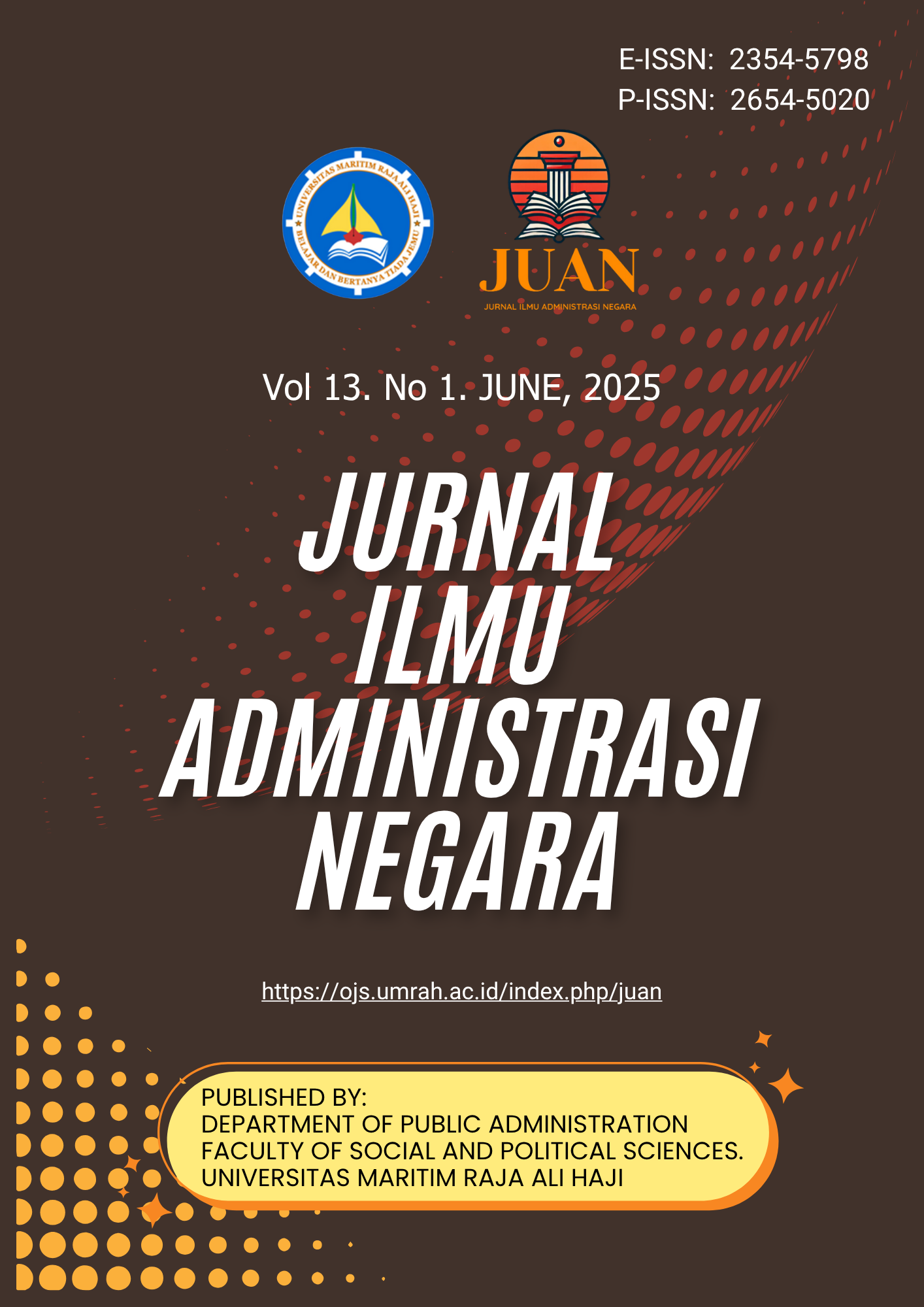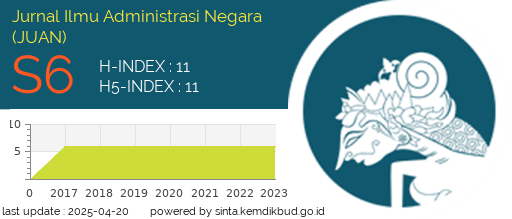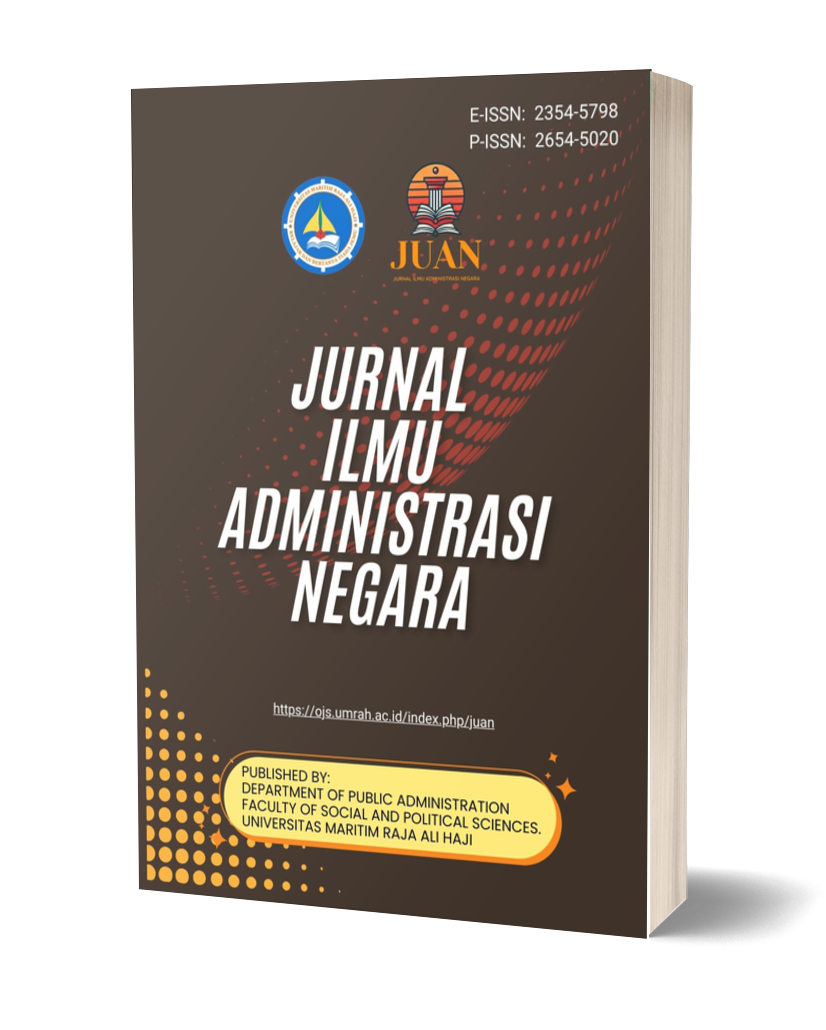Analysis of Factors Affecting Employee Performance at PT. Pertamina Trans Kontinental Marine Regional I Sungai Pakning
DOI:
https://doi.org/10.31629/juan.v13i1.7366Keywords:
Barriers, Performance Expectations, Consequences, FeedbackAbstract
Every organization or company requires resources to achieve its objectives. Human resources are the most determining factor in every company, so it can be said that human resources are one of the main assets in a company to achieve corporate goals. PT. Pertamina Trans Kontinental focuses on offshore activities that assist offshore oil and gas exploration for lessees of ships owned by the company and third-party vessels. In carrying out its duties and functions, PT Pertamina Trans Kontinental Marine Regional I Sungai Pakning is supported by human resources with the status of Organic Employees and Non-Organic Employees totaling 48 people. This company also runs business activities in the shipping and maritime service industry sector and realizes that customer service is the top priority, so the organization continues to strive to make its services more effective and efficient. In measuring the Factors that Influence Employee Performance at PT. Pertamina Trans Kontinental Marine Regional I Sungai Pakning from 48 respondents with 5 (five) indicators, namely Barriers, Performance Expectations, Consequences, Feedback, and Individual Knowledge, Skills and Abilities. The data analysis used Descriptive Statistics. With the Likert scale, scores for each assessment were obtained with a score range of 1-5. Respondent answers varied with criteria: Strongly Agree, Agree, Neutral, Disagree, and Strongly Disagree. Based on the recapitulation of respondent responses for all indicators on the Factors that Influence Employee Performance at PT. Pertamina Trans Kontinental Marine Regional I Sungai Pakning, the research results can be categorized as Strongly Agree.
Downloads
References
Afrizal, D., Luthfi, A., Wallang, M. Bin, Hildawati, H., & Ekareesakul, K. (2024). Citizens’ Intention to Use E-Government Services in Local Government by Integrating UTAUT, TPB, and TAM Model. Journal of Local Government Issues, 7(2), 129–143. https://doi.org/10.22219/LOGOS.V7I2.32437
Alefari, M., Almanei, M., & Salonitis, K. (2020). Lean manufacturing, leadership and employees: the case of UAE SME manufacturing companies. Production and Manufacturing Research, 8(1), 222–243. https://doi.org/10.1080/21693277.2020.1781704
Al-Kharabsheh, S. A., Attiany, M. S., Alshawabkeh, R. O. K., Hamadneh, S., & Alshurideh, M. T. (2023). The impact of digital HRM on employee performance through employee motivation. International Journal of Data and Network Science, 7(1), 275–282. https://doi.org/10.5267/J.IJDNS.2022.10.006
Ariani, M., Tamara, D., Yuliani, T., Saraswati, W., Arrywibowo, I., & Caisar Darma, D. (2025). Employee performance and several predicting factors: A causality and strategy implication. Corporate & Business Strategy Review, 6(1), 293–303. https://doi.org/10.22495/cbsrv6i1siart6
Atatsi, E. A., Stoffers, J., & Kil, A. (2018). Factors affecting employee performance: a systematic literature review. Journal of Advances in Management Research, 16(3), 329–351. https://doi.org/10.1108/JAMR-06-2018-0052
Clark, A. M. (1998). The qualitative-quantitative debate: moving from positivism and confrontation to post-positivism and reconciliation. J Adv Nurs, 27(6), 1242–1249.
Creswell, J. W., & Creswell, J. D. (2018). Research design. Qualitative, quantitative, and mixed methods approaches (5th ed.). SAGE Publications.
Diamantidis, A. D., & Chatzoglou, P. (2019). Factors affecting employee performance: an empirical approach. International Journal of Productivity and Performance Management, 68(1), 171–193. https://doi.org/10.1108/IJPPM-01-2018-0012
Erlianti, D., Maznah Hijeriah, E., & Adriani, W. (2022). Analisis pelayanan publik dalam pengambilan barang bukti tilang pada Kantor Kejaksaan Negeri Dumai. Jurnal Ilmiah Multidisiplin, 1(6), 56–64.
Faggio, G., & Silva, O. (2014). Self-employment and entrepreneurship in urban and rural labour markets. Journal of Urban Economics, 84, 67–85. https://doi.org/10.1016/j.jue.2014.09.001
Hendri, M. I. (2019). The mediation effect of job satisfaction and organizational commitment on the organizational learning effect of the employee performance. International Journal of Productivity and Performance Management, 68(7), 1208–1234. https://doi.org/10.1108/IJPPM-05-2018-0174
Hildawati, H., & Afrizal, D. (2021). Kepuasan masyarakat terhadap pelaksanaan program corporate social responsibility (CSR) PT. Pertamina RU II Dumai. JIANA ( Jurnal Ilmu Administrasi Negara ), 19(2), 153–167. https://doi.org/10.46730/JIANA.V19I2.7996
Ibrahim, R., Boerhannoeddin, A., & Kazeem Kayode, B. (2017). Organizational culture and development: Testing the structural path of factors affecting employees’ work performance in an organization. Asia Pacific Management Review, 22(2), 104–111. https://doi.org/10.1016/J.APMRV.2016.10.002
Jeon, H. J. (2025). Employee satisfaction and CEO pay-performance sensitivity. Research in International Business and Finance, 77, 102883. https://doi.org/10.1016/J.RIBAF.2025.102883
Jnaneswar, K., & Ranjit, G. (2020). Effect of transformational leadership on job performance: testing the mediating role of corporate social responsibility. Journal of Advances in Management Research, 17(5), 605–625. https://doi.org/10.1108/JAMR-05-2020-0068
Kundi, Y. M., Aboramadan, M., Elhamalawi, E. M. I., & Shahid, S. (2020). Employee psychological well-being and job performance: exploring mediating and moderating mechanisms. International Journal of Organizational Analysis, 29(3), 736–754. https://doi.org/10.1108/IJOA-05-2020-2204
Kusuma, D. H. (2024). Analisis Penerapan Project Management Fungsi Marine Engineering & Reliability Region III PT Pertamina Trans Kontinental [ Sekolah Tinggi Ilmu Ekonomi YKPN Yogyakarta]. http://repositorybaru.stieykpn.ac.id/2309/
Leavy, P. (2022). Research design : quantitative, qualitative, mixed methods, arts-based, and community-based participatory research approaches. The Guilford Press.
Liu, X., Cheng, F. J., Zhang, R., & Li, Z. (2025). Impact of employee compensation structure on company performance: Moderating effects of ownership concentration. Finance Research Letters, 74, 106702. https://doi.org/10.1016/J.FRL.2024.106702
Lukito, D., Susanti, M., Susanto, Y., Judijanto, L., Ali, M., Hartono, & Mahardhani, A. J. (2025). Determinants of sustainable employee performance: A study of family businesses in Indonesia. Asia Pacific Management Review, 30(2), 100340. https://doi.org/10.1016/J.APMRV.2024.12.004
Patton, M. Q. (2002). Qualitative research and evaluation methods. In Qualitative Inquiry (Vol. 3rd). SAGE. https://doi.org/10.2307/330063
Pawirosumarto, S., Sarjana, P. K., & Muchtar, M. (2017). Factors affecting employee performance of PT.Kiyokuni Indonesia. International Journal of Law and Management, 59(4), 602–614. https://doi.org/10.1108/IJLMA-03-2016-0031
Silva, P., Moreira, A. C., & Mota, J. (2023). Employees’ perception of corporate social responsibility and performance: the mediating roles of job satisfaction, organizational commitment and organizational trust. Journal of Strategy and Management, 16(1), 92–111. https://doi.org/10.1108/JSMA-10-2021-0213
Wardana. Bendra. (2024). Implementasi metode weight product untuk penilaian kinerja karyawan di PT. Pertamina Gas. Jurnal Software Engineering and Information System, 4(1), 16–22. https://ejurnal.umri.ac.id/index.php/SEIS/article/view/6701/2786
Wen, T., Mao, S., Fan, X., & Wu, J. (2025). The Effect of Performance Pressure on Employee Well-Being: Mediator of Workplace Anxiety and Moderator of Vocational Delay of Gratification. International Journal of Mental Health Promotion, 27(4), 591–606. https://doi.org/10.32604/IJMHP.2025.057726
Zhenjing, G., Chupradit, S., Ku, K. Y., Nassani, A. A., & Haffar, M. (2022). Impact of Employees’ Workplace Environment on Employees’ Performance: A Multi-Mediation Model. Frontiers in Public Health, 10. https://doi.org/10.3389/FPUBH.2022.890400
Downloads
Published
Issue
Section
License
Copyright (c) 2025 E.Maznah Hijeriah, Dila Erlianti

This work is licensed under a Creative Commons Attribution-ShareAlike 4.0 International License.
You are free to:
- Share — copy and redistribute the material in any medium or format for any purpose, even commercially.
- Adapt — remix, transform, and build upon the material for any purpose, even commercially.
- The licensor cannot revoke these freedoms as long as you follow the license terms.
Under the following terms:
- Attribution — You must give appropriate credit, provide a link to the license, and indicate if changes were made . You may do so in any reasonable manner, but not in any way that suggests the licensor endorses you or your use.
- ShareAlike — If you remix, transform, or build upon the material, you must distribute your contributions under the same license as the original.
- No additional restrictions — You may not apply legal terms or technological measures that legally restrict others from doing anything the license permits.













